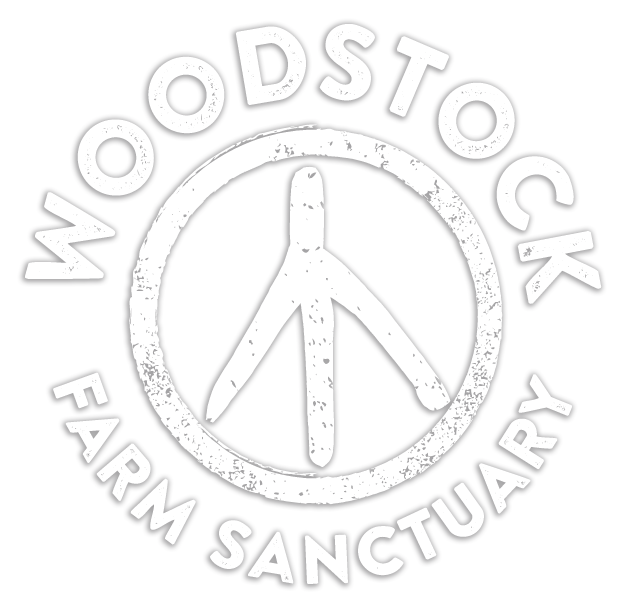Why Sponsor a Turkey?
In the US, your first experience with turkeys might be making paper turkeys in elementary school. The classic construction paper handprint turkey craft emerges in classrooms year after year, around Thanksgiving. Google “turkey crafts” and even more brightly colored iterations emerge. Red, orange, yellow, and brown turkeys with stuck on googly eyes and a triangle nose. Some of them sport pilgrims’ hats. Some of them include nods to the fact that the turkey is getting eaten. None of them teach the children anything about turkeys.
Dani, a current turkey resident rescued 10 years ago
If you lived in a rural area growing up, your other first experience with turkeys might be seeing a wild turkey stuffed and mounted at the hardware store. You might know when turkey hunting season is, and even participate in the hunt when you’re old enough. You learn about turkeys a little bit—enough to know their vulnerabilities. You might own a turkey call so you can lure turkeys to you. But you still don’t get to know them.
And you might have encountered turkeys on a farm, or at a petting zoo. You may have seen them in this situation and, knowing where they’re headed, chosen not to strike up a relationship. You may have been the recipient of pecks from a turkey who is trying to protect his area, or feels threatened by you. You may have seen turkeys who have been fed a great deal so that they are large enough by slaughter time, struggling with mobility.
Zillah, Dani’s best friend, rescued in 2020
You probably haven’t seen them at the larger scale farms, crowded in on each other, unable to sort out a social order that makes sense, with their toes and beak tips removed. You probably haven’t seen the turkeys at smaller scale farms who are sick and receive no medical treatment. But between the turkeys you have and haven’t seen, it’s still likely you don’t really know a turkey.
We’re able to exploit a species when we separate ourselves from them, create myths about them (turkeys are frequently dismissed as “unintelligent’ due to tetanic torticollar spasming, a condition resulting from humans’ selective breeding of them), and ensure that no one is able to forge real relationships with them.
Tai, a rescue from a neglect case in 2021
Forging a connection with farmed animals is part of the process of liberation. And sanctuaries create a place where that can actually happen. Here at Woodstock Sanctuary, we get messages all the time about the connections people have made with the turkey residents who live here, either in person or by learning about them online and seeing them living here in a non-exploitative context. People continue to tell us about the impact that Beatrice, who lived 11 years, had on them. People were amazed when we talked about current resident Dani’s 10th rescueversary that we just celebrated. And people continue to make connections with our other current residents—Tai, Cher, Dionne, Zillah, Shirley, Tiny, Lesley, and Drew.
Beatrice, who passed away in 2021, lived to be 11.
No species is a monolith. You may have heard stories from humans who have had unpleasant encounters with turkeys. You may have heard stories from humans who have close turkey friends that they love and have bonded with. What may be most important is to recognize and internalize is that each turkey out there is an individual with their own thoughts, desires, comforts, and fears. When you see a turkey’s body on the store shelf, remember that. Tell others to remember. And share the connections you have with turkeys in sanctuaries so that others can start to recognize the individual.
Caregiver Olivia and rescued turkey Tiny cuddling together
Sponsoring a rescued turkey during this season means contributing to their care and making a real connection with them—something many people never do. You can meet all the rescued turkeys here and choose one (or all) to sponsor! Give the gift of care to a rescued turkey this year.





